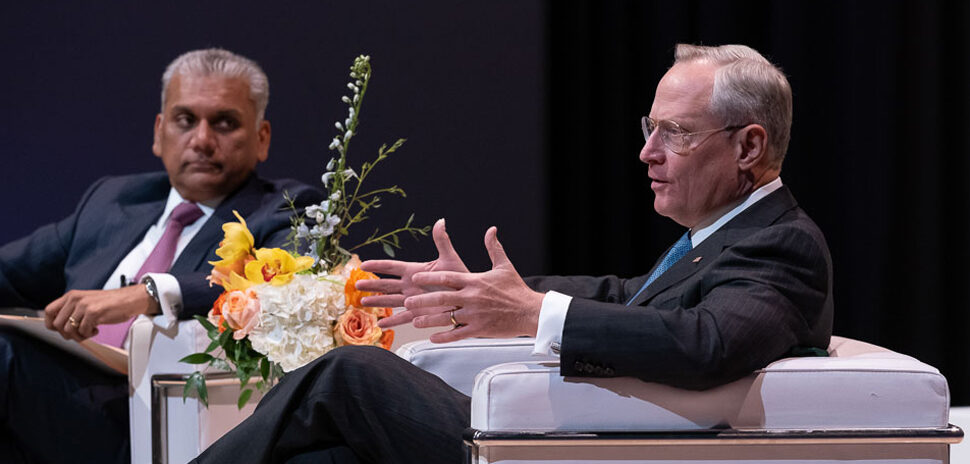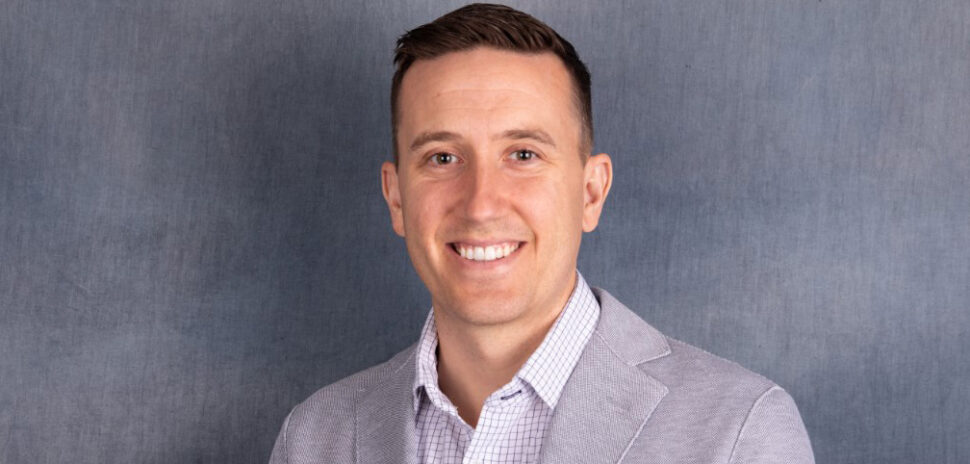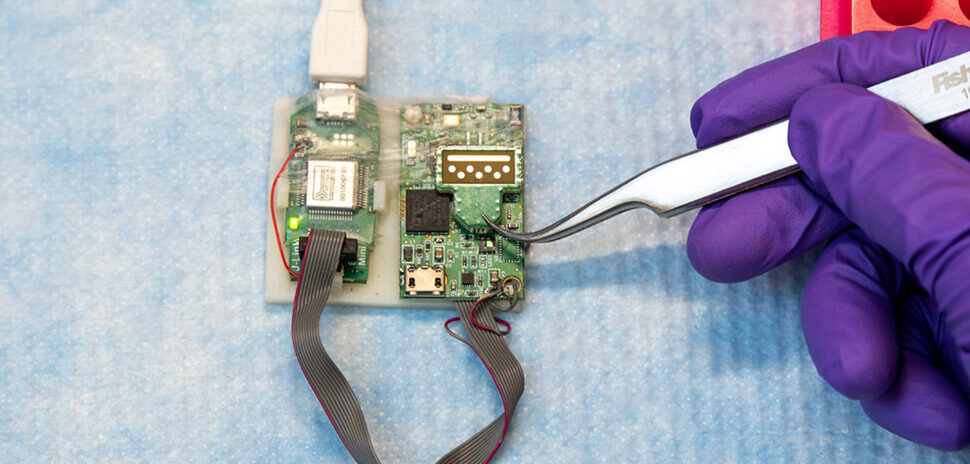![]() Every week, we do a little research of our own. We’re looking for scientists, professors, engineers, entrepreneurs—anybody, really—engaging in research and development across North Texas.
Every week, we do a little research of our own. We’re looking for scientists, professors, engineers, entrepreneurs—anybody, really—engaging in research and development across North Texas.
There’s plenty of good work being done. If you want to put R&D under your microscope, sign up for our e-newsletter.
UTD researchers create device to improve stroke recovery
Work being done by bioengineering researchers at the University of Texas at Dallas could enhance recovery for stroke patients.
The researchers are using a $1.4 million grant that they recently received from the National Institutes of Health to study the use of wireless vagus nerve stimulation (VNS) for stroke recovery.
Through their research, Seth Hays, assistant professor of bioengineering in the Erik Jonsson School of Engineering and Computer Science and Fellow, Eugene McDermott Professor; along with Robert Rennaker, professor of engineering and neuroscience and the Texas Instruments Distinguished Chair in Bioengineering, have created a low-cost, wireless, clinical-grade device designed to eliminate the challenges of previous VNS devices, according to a statement.
“This is one of the first human-grade implants designed, developed and manufactured at a university,” Rennaker, associate director and chief technology officer of the Texas Biomedical Device Center at UTD, said in a statement.
The NIH funding is expected to be used for final testing of the device before it moves on to clinical trials necessary for approval by the Food and Drug Administration, according to a statement.
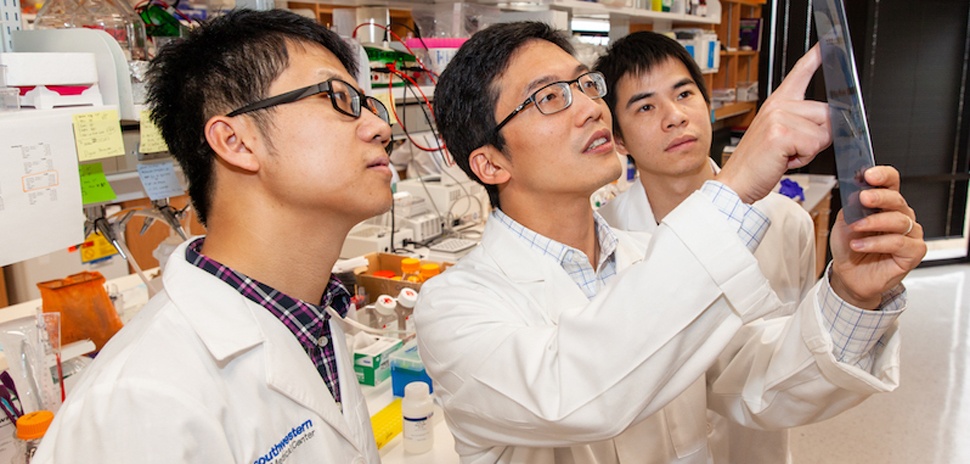
Lianxin Hu, Qing Zhang, and Haibiao Xie are researching kidney cancer treatments. [Photo: Courtesy UT Southwestern]
UTSW research unveils possible kidney cancer vulnerability
An investigation by a team led by a UT Southwestern researcher has revealed a new vulnerability for the 10th most common cause of cancer deaths—kidney tumors.
Through their research into the most common type of kidney cancer—called clear cell renal cell carcinoma—Qing Zhang and his team identified a possible way to treat tumors without affecting healthy tissue nearby.
READ NEXT Discovery: UTD Scientists Focus on How Eyes Heal, UNT Prof Researches ‘Energy Molecules’
Zhang noted in a statement that the study uncovered a mechanism by which either the loss of a protein that protects against cancer or an oxygen-poor environment can promote tumor growth by way of the cancer cell’s oxygen-sensing pathway.
The research points to inhibiting TBK1, an enzyme that becomes more active once the protein is lost, as a potential cancer-fighting strategy, according to a statement.
New therapies are needed, Zhang said, because oftentimes kidney cancer is resistant to the most advanced treatments.
In 2019, kidney cell and renal pelvic cancers affected roughly 74,000 people nationwide, resulting in nearly 15,000 deaths, according to the American Cancer Society. To find out more about the research, go here.
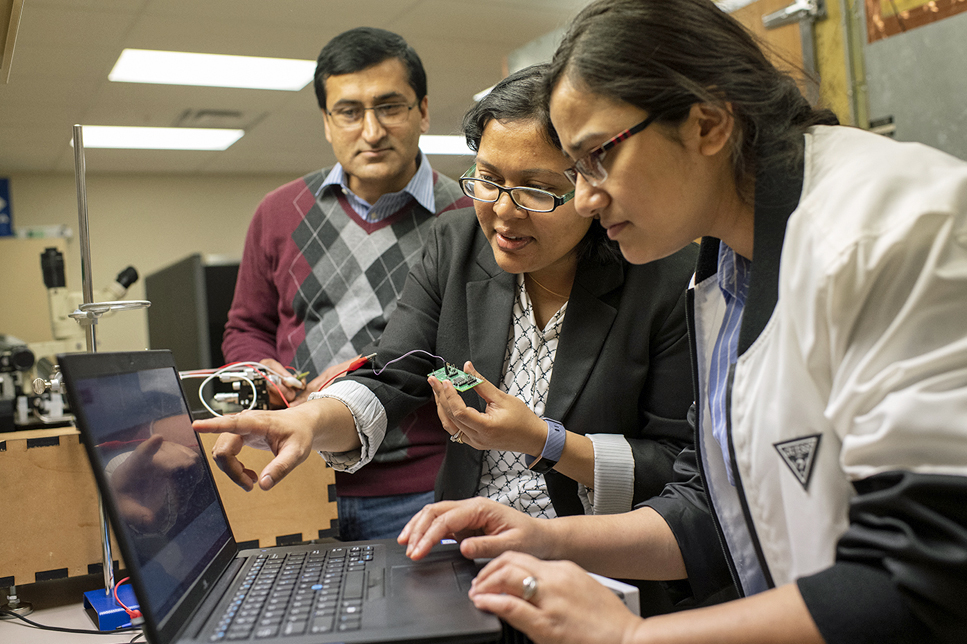
Ifana Mahbub, assistant professor of Electrical Engineering, works on a microchip with students, Pashupati Raj Adhikari and Nishat Tarannum Tasneem, in a lab at Discovery Park at the University of North Texas in Denton. [Photo: Courtesy Ranjani Groth/UNT]
No charging: UNT researcher develops wireless fitness tracker
The latest energy-harvesting technology is being used by an assistant professor at the University of North Texas to develop a wireless, wearable fitness tracker that won’t need to be charged.
“Reverse electro-wetting takes advantage of motion, any motion. For my fitness tracker, that motion will come from a person moving their arms and legs. But, if you think about it, there is motion all around us,” Ifana Mahbub, an assistant professor in the Electrical Engineering Department at UNT, said in a statement. “I envision a future when biomedical devices could take advantage of the movement within an individual’s body. Imagine a pacemaker powered by electricity generated from one’s own heartbeat.”
What is reverse electro-wetting? According to a statement, it works by compressing and decompressing a liquid between two plates.
Typically, reverse electro-wetting isn’t considered the best method of converting kinetic energy to electrical because the power generated is very low, particularly for low-frequency movements such as walking. But for this project, Mahbub is taking advantage of the high surface area created by using porous plates and developing a miniaturized integrated circuit that could increase the amount of power available by 50 times, according to a statement. That’s more than enough to power a small, mobile device or sensor.
“I believe the reverse electro-wetting concept, like other sustainable energy-harvesting methods, will play a key role in the future of mobile devices,” Mahbub said. “And, it is especially important to people, like me, who never remember to charge their Fitbit.”
Russell Reid, an assistant professor of mechanical engineering at Dixie State University in St. George, Utah, is a co-principal investigator on the project.
![]()
Get on the list.
Dallas Innovates, every day.
Sign up to keep your eye on what’s new and next in Dallas-Fort Worth, every day.


